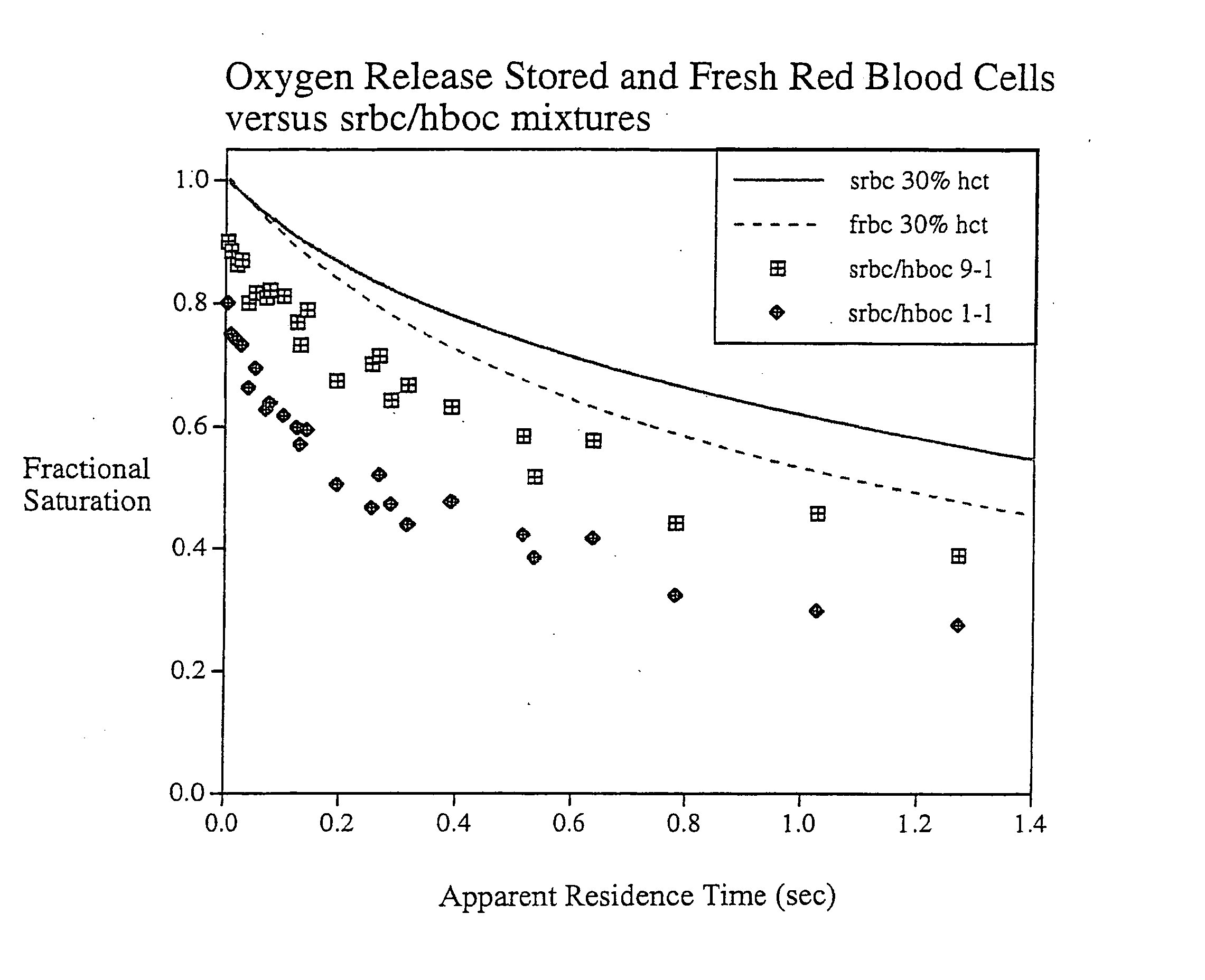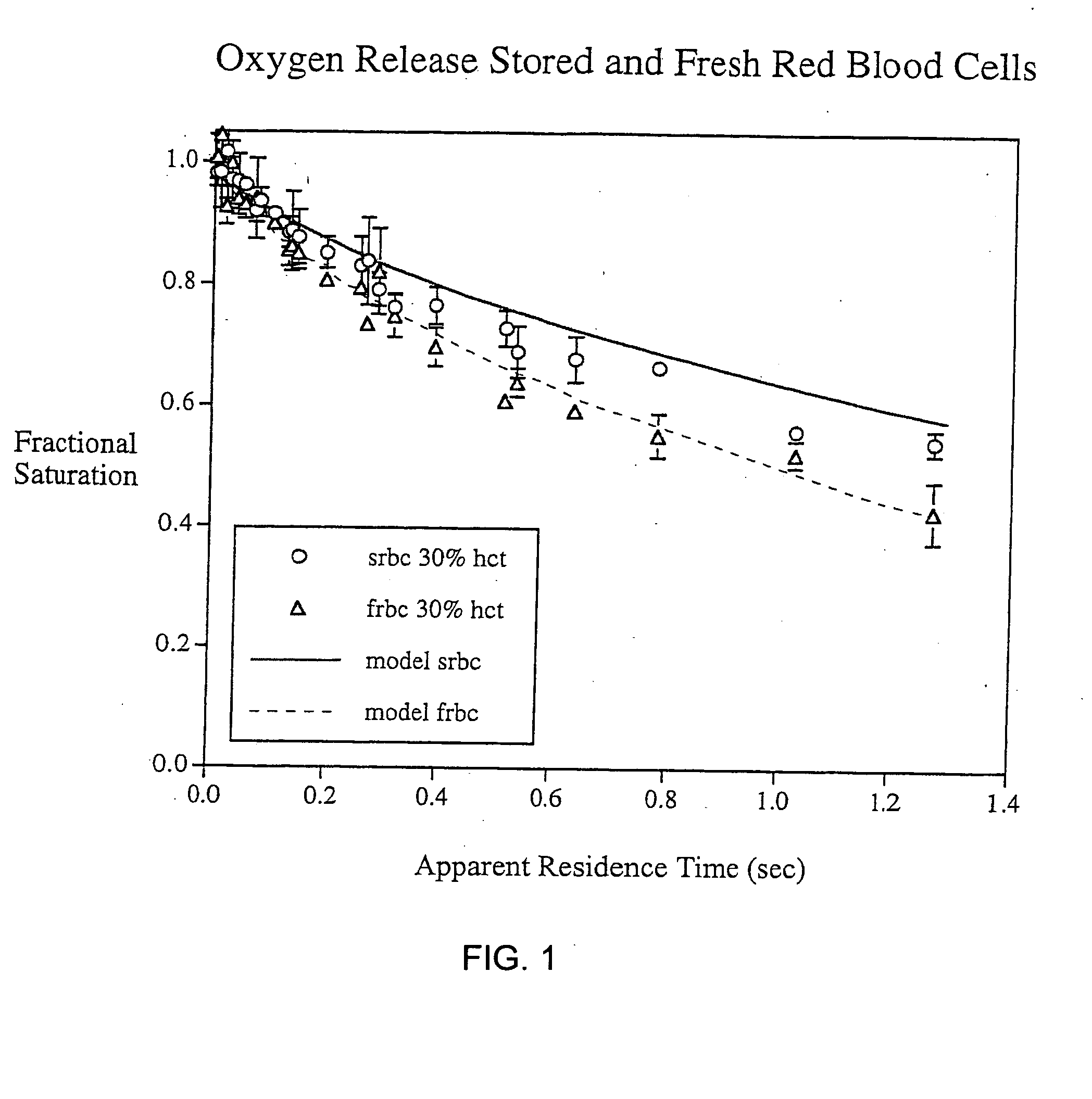Method for improving oxygen transport by stored red blood cells
a technology of red blood cell and oxygen transport, which is applied in the direction of drug composition, peptide/protein ingredient, extracellular fluid disorder, etc., can solve the problems of local ischemia and pulmonary dysfunction, reduce the overall benefit of administering stored blood or red blood cell containing blood products to the patient, deleterious effects, etc., to reduce the rate of oxygen release, increase oxygen release, and restore oxygen delivery potential
- Summary
- Abstract
- Description
- Claims
- Application Information
AI Technical Summary
Benefits of technology
Problems solved by technology
Method used
Image
Examples
Embodiment Construction
[0020] The method of the present invention includes treating a patient by administering to the patient stored red blood cells and a hemoglobin solution. The term “stored red blood cells” includes red blood cells that have a significantly reduced P50 as compared to wild-type hemoglobin or red blood cells, where wild-type hemoglobin has a P50 of at least about 25 mm Hg. “P50” as defined herein means the partial pressure of oxygen at which 50% of the hemoglobin is bound to oxygen. In one embodiment, the stored red blood cells could be native or fresh blood that naturally, by genetic variation or disease, has a P50 significantly less than about 25 mm Hg. An example of stored red blood cells having a reduced P50 is blood wherein the P50 is equal to or less than about 25 mm Hg, equal to or less than about 15 mm Hg. The stored red blood cells can have a reduced level of 2,3-DPG compared to freshly isolated blood from a healthy individual, resulting in reduced P50.
[0021] In one embodiment ...
PUM
| Property | Measurement | Unit |
|---|---|---|
| molecular weight | aaaaa | aaaaa |
| molecular weight | aaaaa | aaaaa |
| partial pressure | aaaaa | aaaaa |
Abstract
Description
Claims
Application Information
 Login to View More
Login to View More - R&D
- Intellectual Property
- Life Sciences
- Materials
- Tech Scout
- Unparalleled Data Quality
- Higher Quality Content
- 60% Fewer Hallucinations
Browse by: Latest US Patents, China's latest patents, Technical Efficacy Thesaurus, Application Domain, Technology Topic, Popular Technical Reports.
© 2025 PatSnap. All rights reserved.Legal|Privacy policy|Modern Slavery Act Transparency Statement|Sitemap|About US| Contact US: help@patsnap.com



